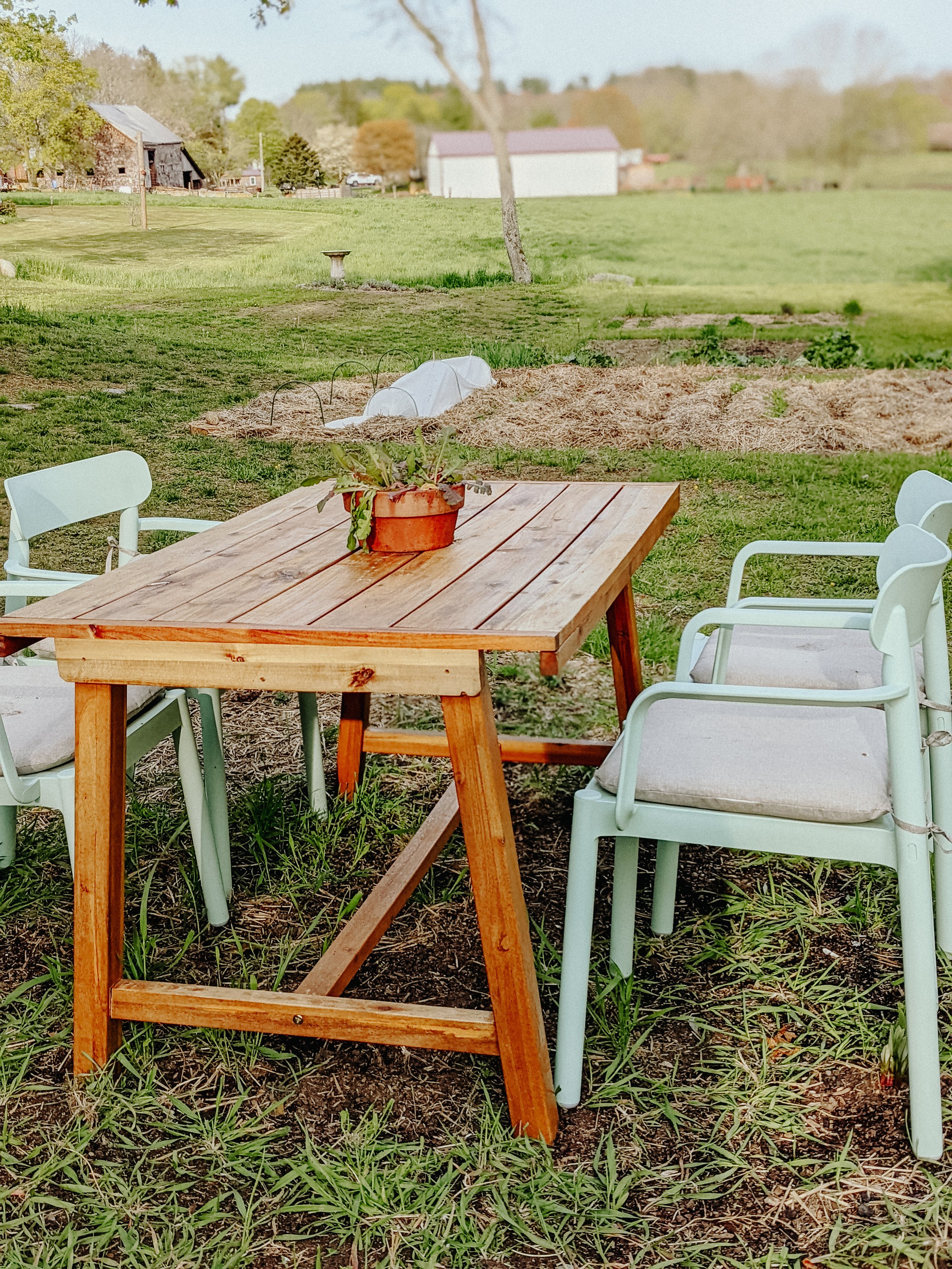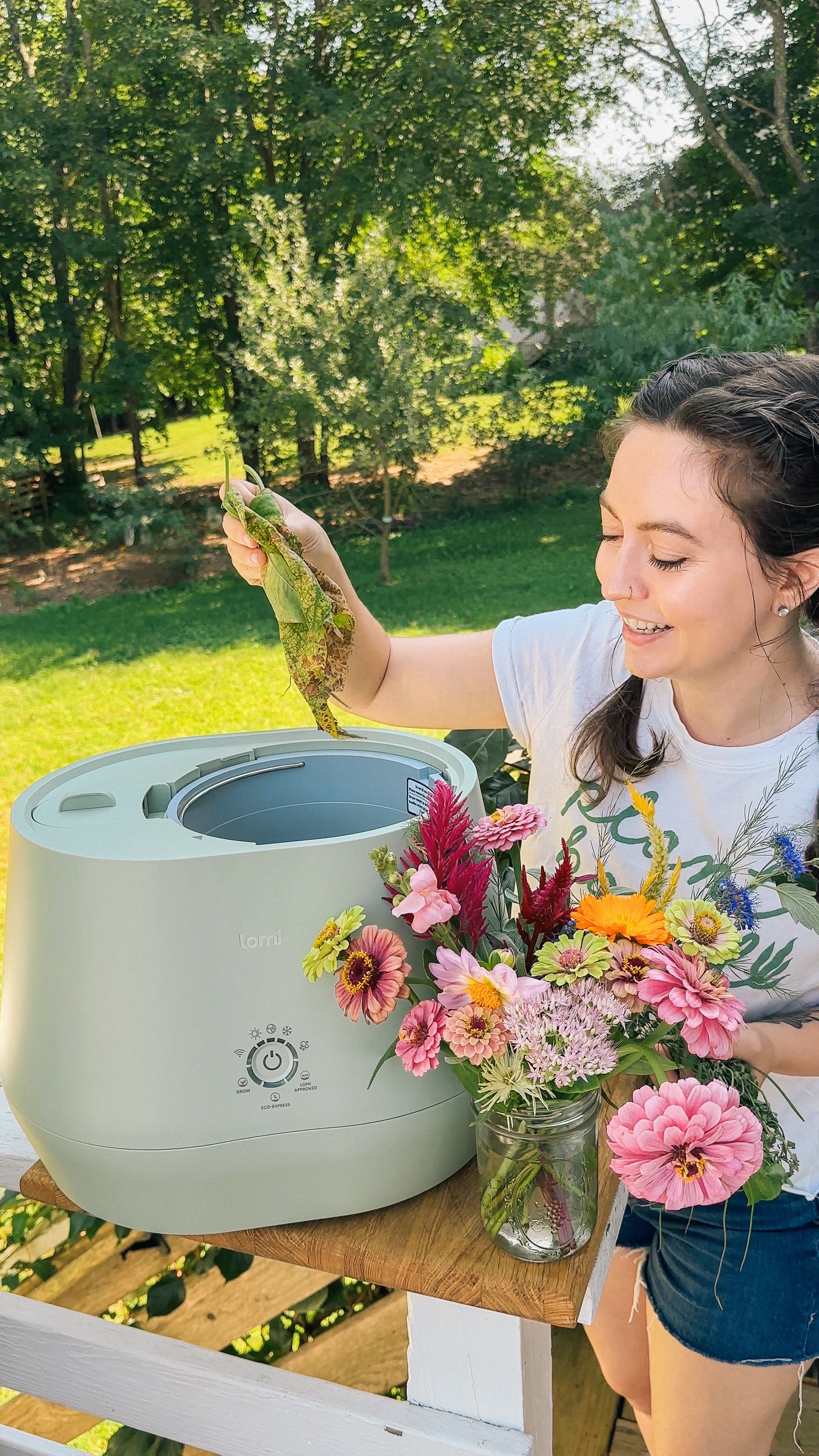Slow Living in the Garden with Chronic Illness
Winter
Last winter my Psoriatic Arthritis flared the worst it ever has, and I found myself wondering if there would be any bit of me that was able to enjoy summer. It hurts my heart to even think about the place I was in mentally. How stuck I was. When you don't have the choice to do the things you love, it can feel like your identity is slipping away.
On a particularly bad day, I thought of geese.
Being the lead goose in a formation is hard. Research has shown that the passage of the leading bird through the air provides an aerodynamic increase in the lift to the bird following behind. This is why geese fly in a V formation.
How do geese decide who will lead their journey? Is it the strongest bird? The one with the largest wings?
The truth is much more humbling.
Each goose is equally responsible for leading, at different times. They take turns. They share the burden.
I see similar patterns in my own life in this season. We cannot always lead our flock. Sometimes our flock needs to lend a wing, and increase our own lift in turn.
Struggling under the weight of extreme fatigue, pain, and inflammation, I had to accept help more than I’m comfortable with. I had to take on a role of rest and recuperation, and put aside responsibilities.
I learned to be comfortable in the physical and mental discomfort and believe that the people around me want to help me to shoulder that burden.
This vulnerability grounds me. It makes me strong.
Spring
With spring came new growth and new medication. I've struggled to write about my chronic illness since finding a treatment that helps, because not everyone gets to come out of that place I was in. I'm also waiting for the other shoe to drop, feeling like I am on borrowed time.
The weight of that knowledge is heavy on my mind any time I celebrate how far I've come or I realize I was able to do more than I could have before my medication change. It also feels like things were so bad, any improvement is seen from the outside as me being 100% "better" by comparison - which is just never going to happen. It's difficult for me to just appreciate the positive changes without that tinge of uncertainty. Autoimmune disease is like that. When so little is understood you are forced to reckon with an ever changing emotional and physical reality and accept the unknown. Otherwise you miss out on enjoying the good times.
It was a long winter, and spring has been full of hope and realized dreams. But we don't have to find the silver lining in everything all of the time. Sometimes there really isn’t one until you look back later and realize how much you’ve grown through what you’ve gone through.
I know in my heart that these struggles have always made me stronger and more empathetic. I hope sharing my struggles can help someone else feel less alone.
These really hard days don't last. Even when they feel like they will never end, there is always some type of pause and laughter and forgetting of what you’ve gone through, what you’re going through.
I watch what a seed must accomplish before it can become a harvestable, mature plant and wonder if I too am like the seed. Maybe, just maybe, I will form roots and strength where pain and loneliness once was.
This spring I feel tightly encased in my hardened shell, but ready to burst forth and see the sunshine again. But I worry - I know that my love of gardening will test my physical limits, and I need a plan to modify the garden to fit my limitations.
The work of preparing the garden this spring has been harder than ever before, but it wasn't because I planted more - I planted less. It was harder because of my arthritis.
Anyone with chronic illness will tell you that the energy we have is limited. Even medicated and feeling so much better than I did all winter it's still hard to do the things I used to do.
I cried in frustration multiple times. I almost gave up. I have had to let others help me do the things I was so looking forward to doing.
I can’t say, "I got it done anyway" because that's not how chronic illness works - I didn't finish all my tasks. I felt disappointed and so very angry with my body. Something I love to do has been changed in a way I don't know if I'll ever get back and it's okay if that's an adjustment and it's ok if I spend half my time enjoying it and the other half with tear stained dirt streaks running down my face.
Two things can be true. Life isn't a straight line path we get to walk down, even on a moment to moment basis there will be ups and downs.
Accessible Garden Planning
I have the luxury of space, of sprawling land to wander and call home. I have the luxury of time, to spend planning what I'll grow where, to dig in the earth. I have the luxury of knowledge, gathered through my failures.
I can grow my food and watch it from the comfort of this space, this sanctuary I am creating on our land.
These things are not afforded to everyone. Accessible sustainability should be the norm, but it is not.
This season, I took a few steps in order to make it possible for me to garden WITH my chronic illness, not despite it. The first was to accept that I wouldn’t grow as much as I have previously. The second was to set up elevated garden beds.
Since gardening involves a fair amount of kneeling, I knew I had to find a way around that, and elevated beds seemed to be the way to go. I began to research elevated beds, looking for a solution that would work for me.
It turned out that solution was staring me right in the face.
As we began a deep spring clean of our basement my eyes landed on two raised wooden retail tables from a store closing sale that have been sitting in storage for years. We didn’t have to buy anything, we didn’t even have to BUILD anything.
I dragged them outside and got them into position, then I wiped them down and drilled drainage holes into the plywood “floor” of the bed. A layer of weed barrier, then small sticks and top soil blended with last season’s compost, and I had two elevated beds. Our food waste would feed our plants, and our plants would feed us.
I also installed olla watering pots in our garden beds.
Ollas keep your plants watered through a process called soil moisture tension. When the soil around the olla is dry, the water is pulled out through the pot’s “pores”, or microscopic holes in the unglazed clay, and makes its way to your thirsty plants. If the soil is already moist, the water stays in the pot.
With the ollas installed, I would only need to water the gardens every 3-5 days, and instead of standing there holding a hose for what felt like hours I could simply fill the olla pot with water and call it done.
The last thing I did was to get ahead of the weeding. We still had one main in-ground garden bed for larger plants like our corn and squash, and I knew that bending and kneeling to battle the weeds would not be an option any more. I combated this by spreading a very thick layer of straw over the entire bed before I planted anything.
Summer
My accessible garden plan is working. We’ve pulled a spare table out to give me a spot to sit and rest by the sunflowers. It has become a sanctuary for me. I am frustrated at times with how little I have been able to grow in comparison to years past, but I appreciate that I do not have to spent hours tending the garden every week if I’m not able to. The garden will be just fine without me for a bit. I let go and let nature take over.
In August, the garden becomes a jungle dense with life, the most self-sufficient it will be as established plants require less and less of my daily attention.
I do not take for granted that the systems I labored to put in place all year long have finally paid off, the dividends materializing in the form of bell peppers, beans, squash, broccoli, chard and more. But I still like to think I am needed in this season, if only to fend off errant pests and the occasional drought. Feeling needed in the garden is one of the most fulfilling pieces of working with the land.
I’m still processing some disappointment as I've watched other gardeners with their huge lush garden beds, and it's felt like another form of grieving my life before chronic illness. I was able to do that once, and now I can't.
Yes, I am making the most of my circumstance, and yes - my medications have allowed me to return to the activities that make me "me" to some degree. But unless you have chronic illness, you can't understand how hard it is to know things will never be exactly the same as they were when you were healthy.
I am proud of what I have accomplished - I may not have grown the usual quantity of plants, but I have learned to appreciate what I have, accept and support my body, and dedicate time to things that make me happy.
I could go on forever about how chronic illness forces you to put things in perspective in a way that gives as much as it takes, but I'll leave it at that. I went from hating getting up early to go to work at my office job in a call center to making excuses to get up early to tend to the garden, grow our own food and flowers, create art and just enjoy nature. At it’s root, no matter how much or how little I grow - this is what matters.
Your dream life is just one decision away from becoming reality - what small steps can you take today to bring yourself closer to your dreams?









